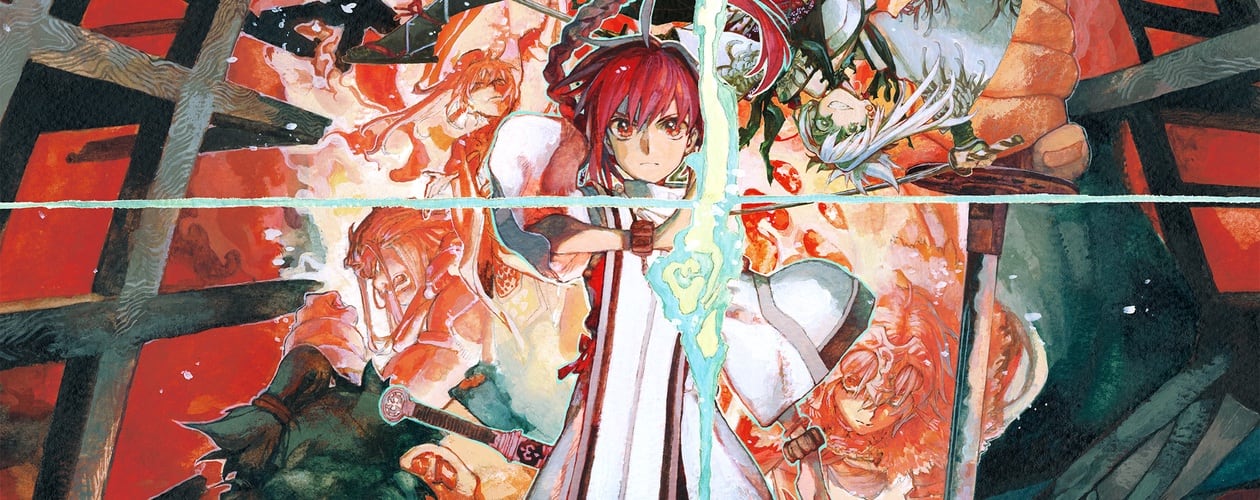I’m a huge Fate fan. Fate/Zero is one of my favourite anime series, I’ve put more time than I’m willing to admit into the Fate/Grand Order mobile game, and I own a staggering amount of Fate figures. For all my time spent exploring the corners of this multi-media franchise, though, it feels like there hasn’t really been a truly iconic Fate game since the PSP days. For all the world-building that the original visual novel does, all the lore, spinoffs and side stories, there is no grand adventure game set that lets you vividly experience all of that. Fate/Samurai Remnant looks to right this wrong.
If you don’t know your Fate/Zero from your Fate/Apocrypha or your Fate/Extella Link from your Everyday Today’s Menu for Emiya, you have nothing to worry about – a lot of Fate content is easy to just dive into standalone, and Fate/Samurai Remnant is no exception. This game brings us all the way back to Edo Japan in 1651 and into the life of Miyamoto Iori, a young swordsman in Asakusa struggling to make ends meet. When a mysterious red marking appears on his hand and an even more mysterious young woman appears in front of him to protect him from a violent masked warrior, it’s clear that he’s become involved in something much bigger than his usual day-to-day duties.
I love the way Fate/Samurai Remnant takes the traditional story beats of a Fate adventure and not only parallels them in the world of 15th-century Edo, but also betrays your expectations if you’re a familiar fan. In the world of Fate, magic fuels everything, and in many of these stories, seven modern mages will be chosen seemingly at random to compete for the Holy Grail, summoning ancient heroes to fight by their side. In Fate/Samurai Remnant, though, Iori has an ounce of magic talent and has no idea how or why he summoned the young woman who identifies herself as Saber, and who isn’t all too happy to be shackled to him. There are other tidbits too – like the fact that Iori is involved in the “Waxing Moon Ritual” instead of the “Holy Grail War”, or that the handsome blonde shopkeeper is just literally iconic Fate character Gilgamesh.

Stuff like this is fun fanservice, but it also keeps you guessing as the wider web of Fate/Samurai Remnants story gets revealed. The game steers away from the gruesome grit of Fate/Zero and the trope-heavy shonen adventures of Fate/Stay Night, and goes for more of a mysterious tone that feels like a more grand and big-budget version of some of the best stories from Fate Grand/Order. There’s a lot of solid world-building, blurry character morality, and oodles of story beats and character moments that stay faithful to the real-life origins of the ancient heroic spirits involved here. Plus, as you progress through the story, seeing Iori, Saber, and famous swordmaster (who is a woman now, but don’t worry about it) Miyamoto Musashi bond is so natural and so rewarding.
Given Omega Force and Koei Tecmo’s track record, you might expect Fate/Samurai Remnant to be a mindless Warriors-style beat ’em up. That couldn’t be further from the truth, though. Fate/Samurai Remnant is an action-adventure game far closer to something like Yakuza Zero or Gravity Rush 2. Sure, there’s a little of that Warrior DNA if you look close enough – you are sometimes fighting big groups of enemies at once, and your basic attack abilities consist of a row of light attacks with square and heavy attacks with triangle – but this isn’t an exhausting base-capturing simulator with hundreds of enemies. Koei Tecmo has been moving in this direction through other licensed action spinoffs like BERSERK and the Band of the Hawk and Persona 5 Strikers, and Fate/Samurai Remnant feels like the ultimate expression evolving formula. It’s a complete step up in every regard from those games.
Combat is deeply layered and rewarding, but I’ll get back to that in a second, because Fate/Samurai Remnant is not just a string of combat encounters. There is so much downtime between minor battles and massive boss fights that you spend exploring Edo. Your home base is located in Asakusa, a small town that might be about half of the usual size of something like Kamurocho from Yakuza. There are a handful of NPCs and shops here, but this isn’t the limit of the game world – a single click takes you to the World Map, where you’ll progressively unlock dozens of other towns and locations to visit as you progress through the story.

Despite many of them being in the same general grassy, rural environment of Edo, plenty of these locations have a unique visual identity – Asakusa is run-down and quiet, while Yoshiwara is lined with vibrant courtesan booths and Okachimachi is full of food stalls and tourist traps. These environments aren’t rendered in breath-taking realistic detail, but thanks to the beautiful lighting and gorgeous, super-saturated colors of the game, every location I visited had me stopping and soaking it in before Saber distracted me with a cat to pet or an objective to follow. Characters are just as beautifully rendered as the environments, and the music of the game so perfectly matches the era while also delivering exciting, pulse-pounding anime action beats. It all comes together perfectly during boss-battle cutscenes, but even the smaller and quieter character moments feel so charming thanks to the game’s strong aesthetic.
One way or another, you’ll eventually run into enemies. Whether triggered by a quest or one of the danger zones on the map, you’ll quickly transition into a closed-off arena wherever you’re standing to battle your foes. At first, it’s just you and Saber, and the two of you have a pretty limited toolset – you can spend gems to cast an offensive spell, Saber attacks on her own, and as you deal damage you fill up a meter you can use to trigger her special attacks. There are constantly new tools being added to your arsenal, though. You can unlock different sword styles for Iori to swap between mid-battle, you can fill an ultimate attack/Noble Phantasm meter for an extra beefy attack, or fill a different meter that lets you temporarily control Saber and fight as her for a few moments. As you progress through the story, you’ll even be able to befriend other Servants and use them in battles.

There are so many options at your disposal, and they’re all simple enough that, juggling between these numerous skills creates a really aggressive and fluid combat loop – land a basic combo, lead it into a stance change, extend that combo, use a special skill, build up meter to swap to Saber, and on and on. I appreciate the granular ways you can customise your toolkit, too – Iori’s katanas can be customized in four different sections to alter his stats and skills and even their look. Plus, Iori, Saber, and every additional servant have unique skill trees to invest in, and Saber can discover new special skills simply by exploring the town and doing side activities.
If there’s one element that I feel like doesn’t totally flow with the full package, though, it’s Iori’s magic system – you spend gems to cast spells that can be offensive or give you buffs, but in the early game the rate at which you get gems is really low, and enemies will often shift into an attack-charging stance that can only be interrupted by magic or a servant attack. So, until the middle portion of the game when you unlock a magic-wielding Wind stance and more opportunities to gain gems, you often only get to use magic attacks as a rare last resort in order to keep your gem supply up.

I never got tired of Fate/Samurai Remnant – and that is perhaps the most striking thing I took away from the game. So many Omega Force are built around a repetitive, mindless and rewardingly flashy experience, but while Fate/Samurai Remnant game is rewarding and flashy, it’s not repetitive at all. For the first time ever, it feels like this team has delivered a consistent, narrative-first experience that constantly keeps things fresh and engaging. So much of that is thanks to what they’ve learned in designing a tight gameplay experience, but just as much of it belongs to the Fate universe tying everything together – Iori and Saber are an unforgettable duo, the mystery of the Waxing Moon Ritual is an engrossing samurai fantasy epic, and I so desperately want more games like this. Fate/Samurai Remnant is a new high point for the entire franchise.



